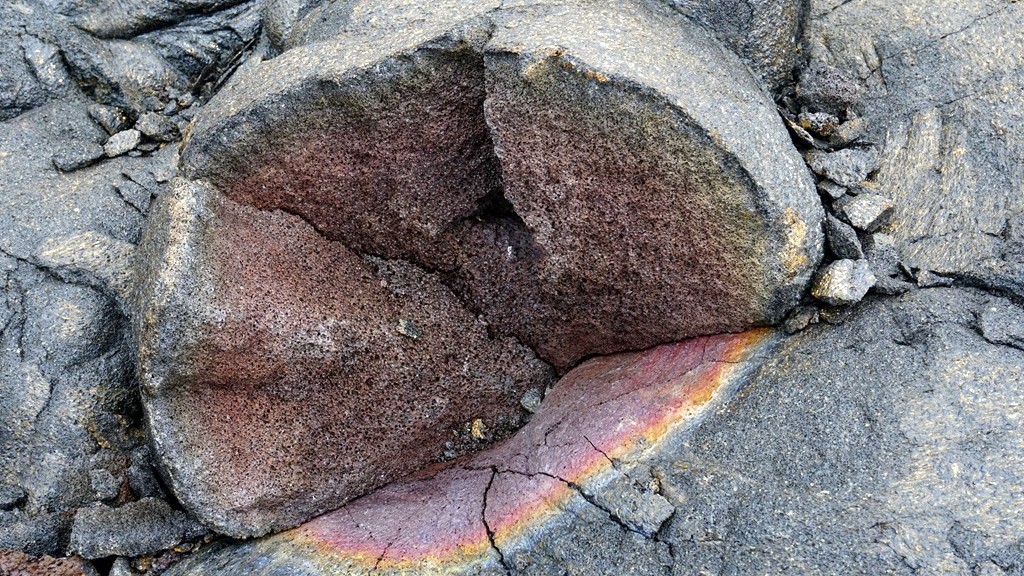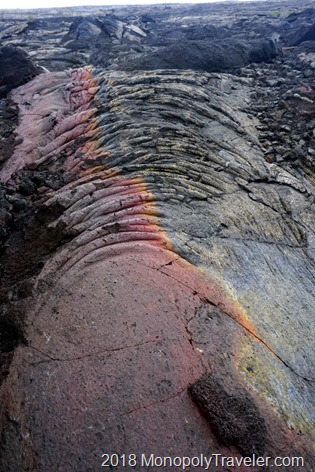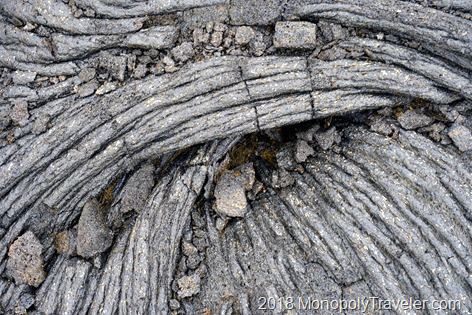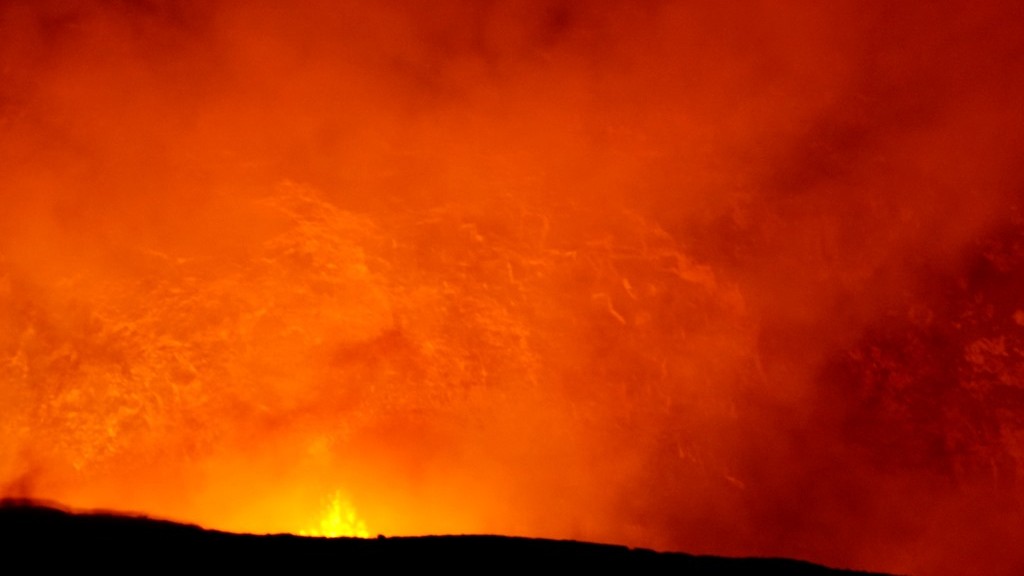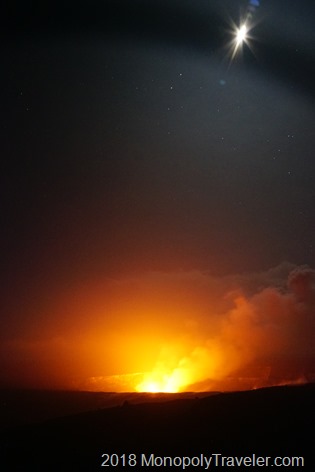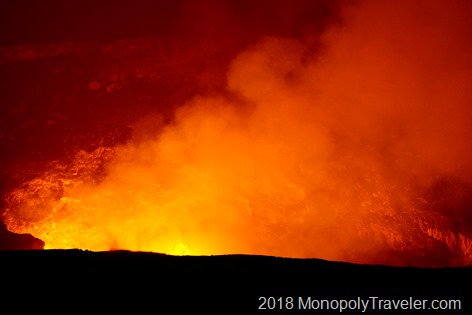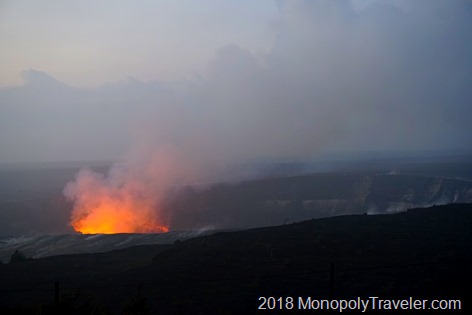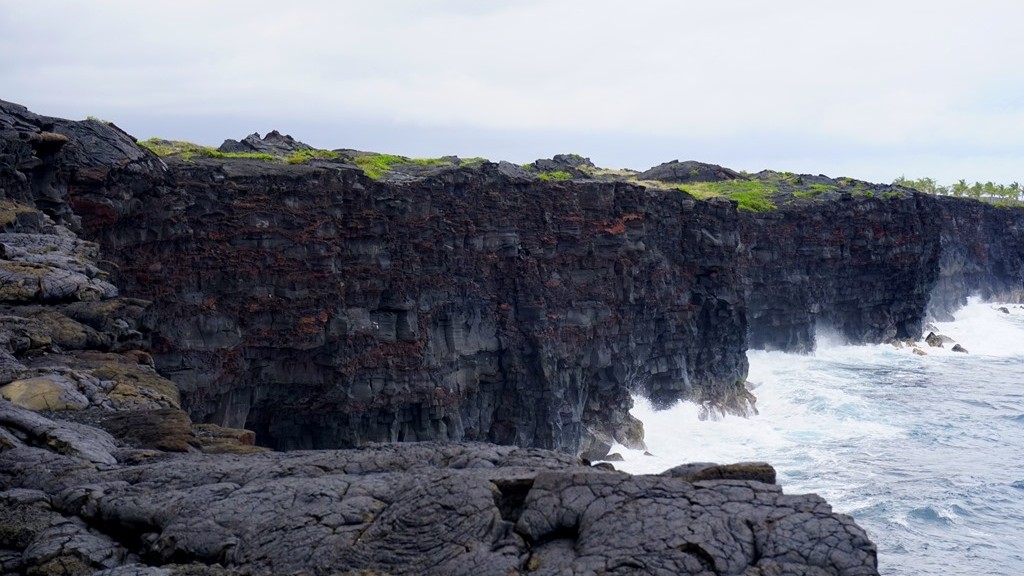There was one day set aside to explore Hawaii Volcanoes National Park so not a great deal of time. Making things a little less interesting was rain at the top of Kilauea making it difficult to see much and decreasing our motivation to venture too far from the car. Still we were determined to do all that we could on this final National Park adventure. Arriving mid-morning our first destination was the Kilauea Visitor Center to learn a little about this area and the active volcanoe we were standing on. Looking over the exhibits explaining what was creating this mountain and the surrounding new land along with plants and animals inhabiting it brought us to lunchtime. There really wasn’t a good place to eat nearby that we knew of plus our plan was for to have a picnic while taking in some amazing views. The rain outside indicated we needed to make other arrangements so looking over the park we found some possible places to sit and eat under dry skies at the end of Chain of Craters Road which was next to the ocean and away from the rain at a lower elevation.
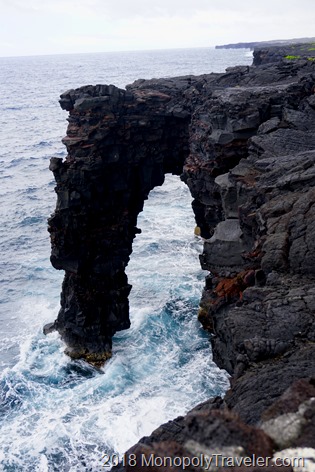
After a short break eating, it was time to explore the coast in front of us a little and work our way back up to the summit of the volcano. Just looking out over the ocean was beautiful with the blue water and waves crashing against the shore. Examining the shoreline closer, which is really a cliff plummeting into the water made from a lava flow in 1971 which has been eroding ever since, we discovered a sea arch nearby. An interesting structure protruding from the cliff defying the brutal ocean waves which continually beat against it. Looking even closer the designs throughout this cliff wall made some interesting patterns and colors from all of the different layers of lava flowing at different times binding itself together to form new ground. You can make some of this out in the very top photograph.
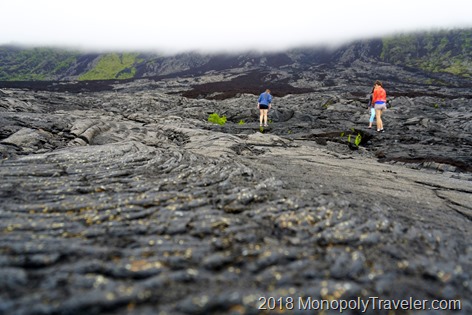
A little bit of time to explore this cliff wall and stare into the sea and we began to ascend back up the mountain towards the smoldering volcano summit. Along the way we stopped to explore some of these lava flows just below the clouds more closely finding different types of lava formations. It was some much fun and amazing to see the different patterns and colors created from lava which flowed 45 years ago. Some has smoother edges more like a mud flow might have while other lava created sharper rocks that, from a distance, appear like dark, rich soil to grow crops in. This is not the case as there is almost nothing growing on it still after 45 years of inactivity.
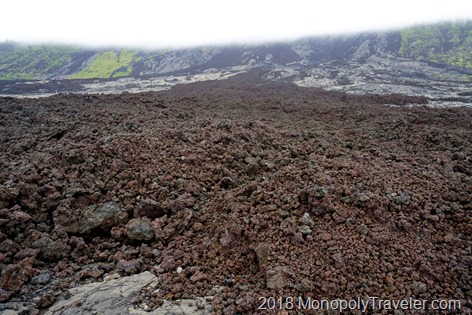
Returning to the car we continued higher up the mountain and soon became enveloped in clouds followed by rain. We wanted to see the popular Thurston Lava Tube which is a cave created by flowing lava at one time. Bravely we donned raincoats and ventured out into the rain to explore this cave. With soaked shoes we entered this tropical cave feeling like we were entering something out of the movie Jurassic Park. Hoping for a dry place we found water dripping from the ceiling and large puddles across the floor. Fortunately the floor was lit up so you could make you way through this portion of the lava tube avoiding many of these puddles. Still it was an eerie experience to know large volumes of lava flowed through here not all that long ago to make this and this mountain is still an active volcano.
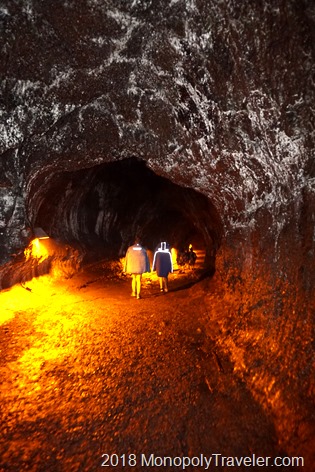
Making our way back to the car having been thoroughly soaked by rain and standing water we continued on to the top of the volcano to catch a glimpse of the large lava lake. Nearing the crater there were steam vents all around trying to alert us to the fact that there is hot lava close by. Still we drove on until arriving at the Jaggar Museum which stands at the side of the crater looking into this volcano. The clouds were covering this mountain making it near impossible to see anything so we headed inside to explore more exhibits and learn about this area. After some time looking things over the clouds cleared a little revealing more details of the mountain summit so I headed outside to look around. Shortly after getting outside there was a large clap of thunder. Excited to see a storm I scanned all around looking for lightning but found none. And then another clap of thunder and I decided seeking shelter might be a good idea. Once inside a ranger told us that it was not thunder we were hearing but rocks moving inside the volcano crater. That was kind of cool to hear and yet a little unsettling at the same time that there are large enough rocks moving to create a sound like that.
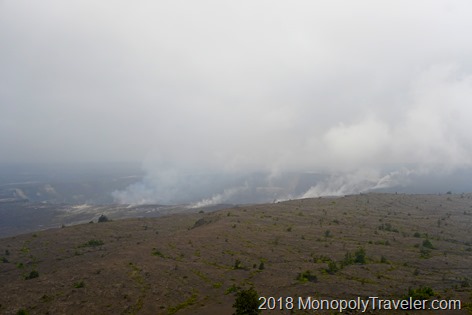
Unfortunately there was no erupting lava to be seen on this cloud filled day and the active lava flow had stopped flowing a couple of days before we arrived. It was a little disappointing to go all the way to Hawaii and visit an active volcano and not have the opportunity to witness actual lava with our own eyes and feel the heat protruding off of it. In a last ditch effort to see some lava I did return another time which I will write about later.

